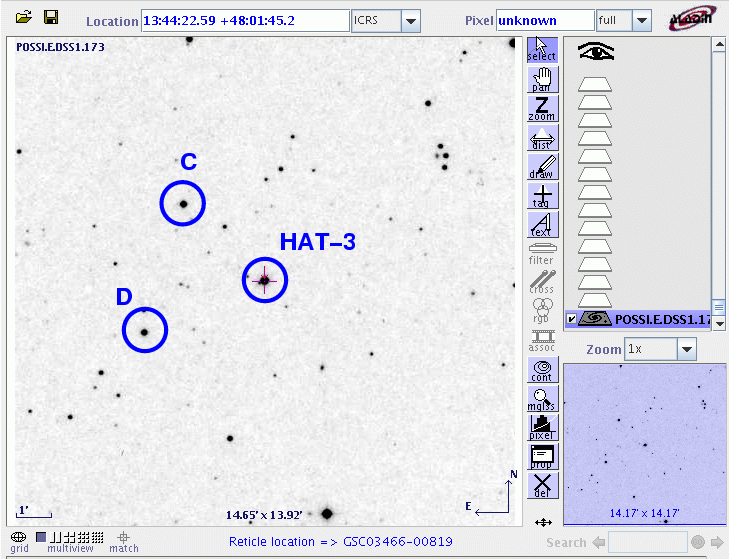
On the night of UT May 09, 2008, the SDSS Photometric Telescope ("PT" for short) took a series of exposures of HAT-3. We detected the egress only, under poor conditions, at a time roughly predicted by the ephemeris.
Notes from the night
This is a chart of the field. HAT-3 is the bright star indicated by the crosshairs. The labelled stars will appear in later analysis.

The host star of HAT-3 has a magnitude V=11.59 according to HAT-P-3b: A Heavy-Element-rich Planet Transiting a K Dwarf Star.
Following the procedures outlined by Kent Honeycutt's article on inhomogeneous ensemble photometry, I used all stars available in each image to define a reference frame, and measured each star against this frame. You can find the software package used to do the ensemble photometry online; it's free!
The night was very clear. The graph below shows the amount by which instrumental magnitudes from each image needed to be shifted to match the ensemble reference. On a clear night, this graph would show a straight horizontal line. I discarded images taken before 595.68 due to the very thick clouds.
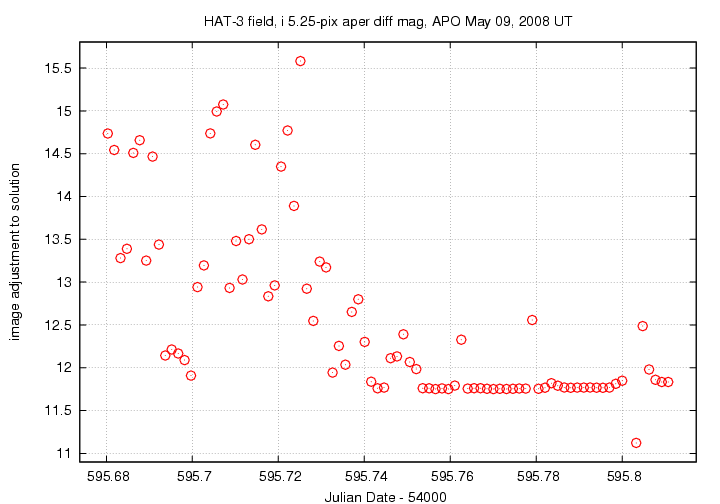
Below is a graph of the scatter in differential magnitude versus magnitude in the ensemble solution.
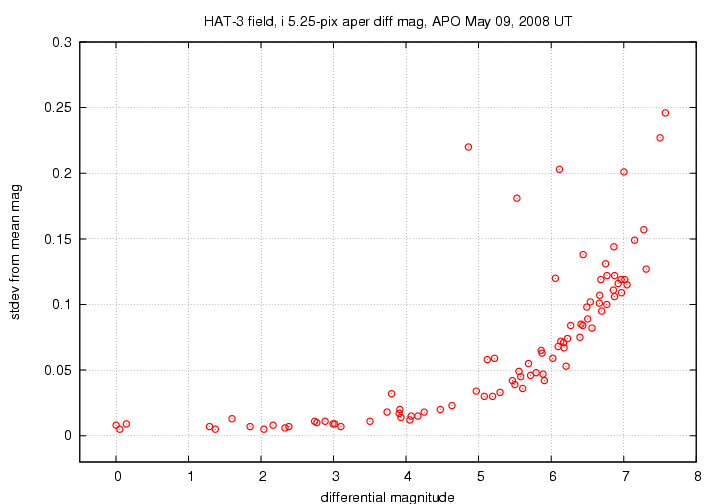
HAT-3 is the star near differential mag 0.1; it shows a small excess of scatter over neighboring stars of the same brightness. The "noise floor" in these measurements is about 0.005 mag -- not very good.
Below are the light curves for the target (green symbols) and some comparison stars in the field.
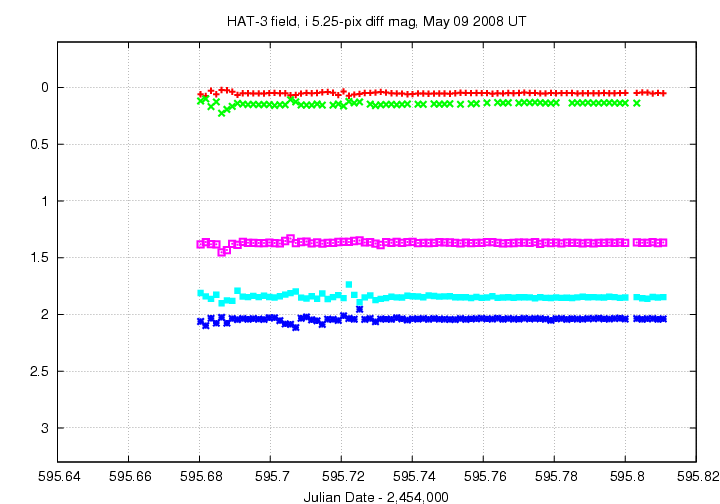
In this closeup, I have shifted the data for two comparison stars to move them closer in magnitude to the target.
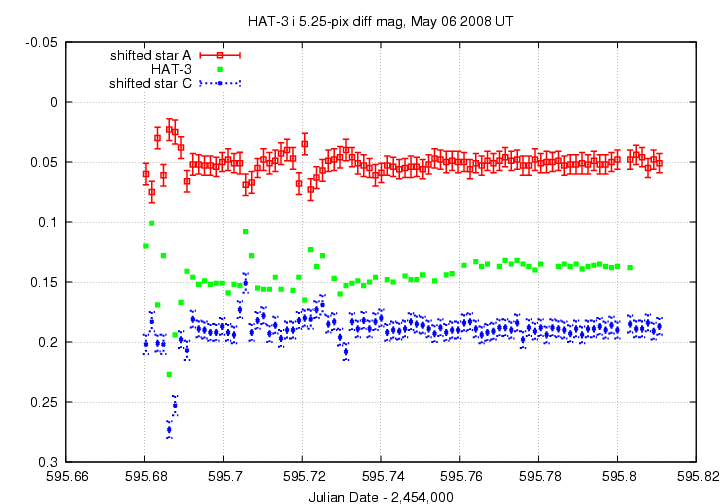
The ingress is invisible to my eye, due to the noise in the early measurements. I can see a clear egress at about 595.76.
Justin's notes indicate that the ephemeris prediction is for ingress at 595.681 -- in the noisy part of the data -- and egress at 595.767 -- close to my estimate.
You can grab the measurements for your own analysis. Below is a table with three flavors of time, plus the differential magnitude of the target and an estimate of the uncertainty in each measurement. I show the first few lines of the file to give you an idea of its format.
# Measurements of HAT-3 made with APO PT, May 9, 2008 UT. # Each exposure 45 seconds long in SDSS i-band; # Tabulated times are midexposure (FITS header time - half exposure length) # and accurate only to +/- 1 second (??). # 'mag' is a differential magnitude based on ensemble photometry # using a circular aperture of radius 5.25 arcseconds. # # UT day JD-2,450,000 HJD-2,450,000 mag uncert May09.68034 4595.68034 4595.68253 0.120 0.007 May09.68182 4595.68182 4595.68401 0.101 0.007 May09.68329 4595.68329 4595.68548 0.169 0.007 May09.68477 4595.68477 4595.68696 0.128 0.007
Last modified 06/22/2008 by MWR.